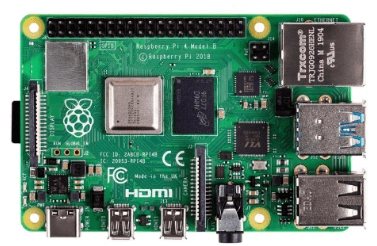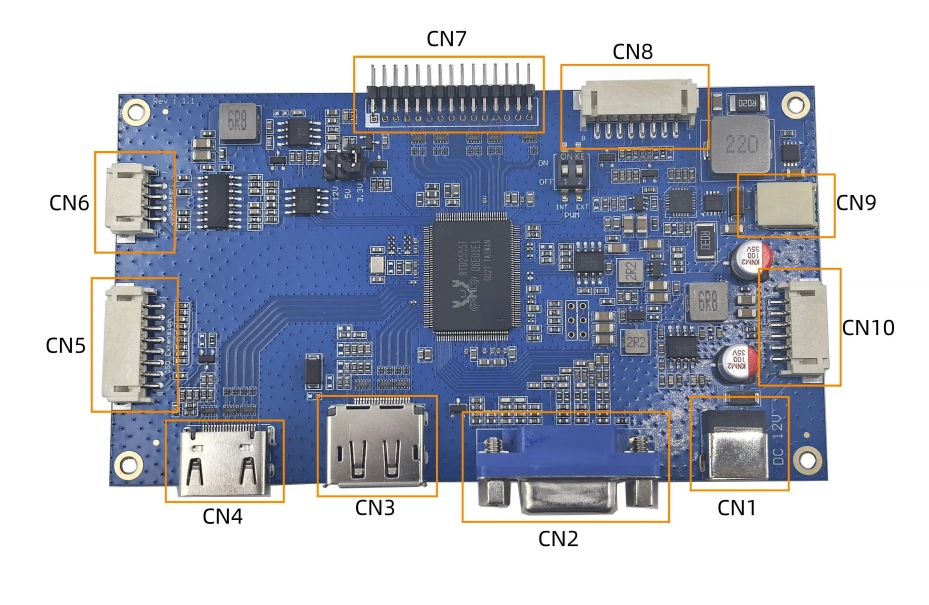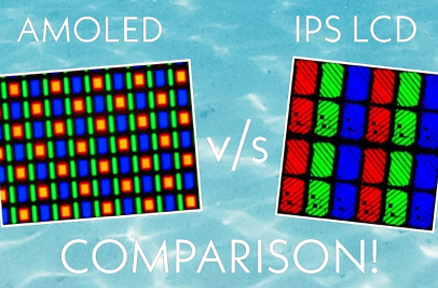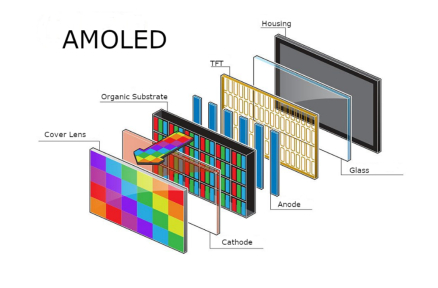What is the Display Interface?
For display purposes, the display controller provides an interface between the multimedia processor and a display module. In the underlying logic, the display interface is the media to transfer the signals of the master controller to the display module. In the TFT display module, the interface usually comes along in the FPC or PCB, and even in the extension of LCD controller boards.
Choosing an appropriate display interface is essential for ensuring compatibility and performance between your system’s processor and its visual output. The type of interface selected affects not only resolution and size but also power consumption, speed, and complexity.
6 Most Common Types of TFT Display Interfaces
According to the driving and control mode of TFT-LCD, the main signal input interface types are as follows: MCU (also known as MPU), SPI, TTL (also known as RGB), LVDS, DSI (also known as MIPI), and EDP.
MCU (Micro Control Unit)
Basic Architecture and Working Principle
The MCU interface is essential because it can write and read data stored in the internal frame buffer or the gadget’s storage. It typically supports small displays under 5 inches with resolutions below 480×800.
Every MCU interface includes four types of signals: RD (Read enable signal in 8080 MCU interface), WR (Write enable signal in 8080 MCU interface), RS (Reset pin), CS (Chip select pin), Data signals: 18-bit, 16-bit, 9-bit, or 8-bit
Advantages and Limitations
MCU interfaces are simple to implement and cost-effective. However, they lack high-speed performance, making them unsuitable for large or high-resolution displays.
Typical Use Cases in Embedded Systems
This type is ideal for low-power embedded systems like handheld meters or basic user interfaces on appliances.
SPI (Serial Peripheral Interface)

Communication Protocol Overview
SPI is a serial peripheral device interface. It performs synchronous serial data transmission between the CPU and the Driver IC. The data is transmitted in bits, with high bits in the front and low bits in the back.
It supports both 3-line and 4-line configurations depending on design requirements.
Benefits of SPI in Display Applications
SPI requires fewer pins than parallel interfaces, reducing PCB complexity. It’s suitable for compact devices where space-saving is critical.
Performance Considerations
The transmission speed is only a few Mbps, which is slow. Thus it’s commonly used for low-resolution displays such as those found in smart wearables or small home devices.
TTL-RGB (Transistor Transistor Logic – Red Green and Blue)
Signal Transmission Mechanism
The TTL level signal is generated by the TTL device. The TTL interface transmits data in parallel. It superimposes the changes of the three color channels of red (R), green (G), and blue (B) and outputs them together.
Pin Configuration and Electrical Characteristics
Every RGB interface includes five types of signals: VS (Vertical Synchronization), HS (Horizontal Synchronization), DCLK (Dot Clock), DE (Data Enable), D0…DXX
RGB interfaces can vary from 6-bit to 24-bit depending on color depth requirements.
Application Scenarios
TTL-RGB interfaces are widely used in mid-sized displays that require fast updates like video playback—commonly seen in automotive dashboards or industrial HMI panels.
MIPI-DSI (Mobile Industry Processor Interface – Display Serial Interface)
High-Speed Serial Communication Features
DSI is a display serial interface, which is a standard display interface defined by the MIPI Alliance. Its advantages are lower power consumption, higher data transmission rate (about 1Gbps), and smaller layout space.
It supports multiple lanes—1 up to 8—to scale bandwidth based on resolution needs.
Power Efficiency and Data Throughput
MIPI-DSI offers excellent power efficiency while maintaining high throughput. It’s especially beneficial for battery-powered mobile devices.
Usage in Mobile and Compact Devices
Hence, the interface mainly applies to terminals that require high-resolution displays, such as tablets, smartphones, and laptops.
LVDS (Low Voltage Differential Signaling)

Differential Signaling Technology Explained
LVDS interface is a low-swing differential signal technology. It can make the signal transmit at the rate of hundreds of Mbps on the differential line pair or balanced cable
LVDS uses current-driven signaling with ±350mV swing at a DC bias level of 1.2V.
Noise Immunity and Signal Integrity
The interference between the same pair of differential – and + lines can cancel each other, so the anti-interference ability is strong.
This makes LVDS highly suitable for industrial environments with electrical noise.
Implementation in Industrial Displays
10.1inch IPS 1920×1200 TFT LCD with LVDS Interface, 12.1 inch 1024×768 TFT LCD display with LVDS interface, are examples used in industrial-grade applications demanding stable performance under harsh conditions.
EDP (Embedded Display Port)
Integration with Modern Graphics Processors
The EDP interface is a digital interface based on the display port architecture and protocol. It allows direct integration into GPUs commonly found in PCs or embedded computing platforms.
Bandwidth Capabilities and Resolution Support
It can transmit high-resolution signals with simpler connectors and fewer pins, supporting resolutions well beyond Full HD without needing multiple lanes like LVDS would.
Suitability for High-End Displays
15.6 inch 3840×2160 AM-OLED EF60UBA68 exemplifies how eDP supports ultra-high-definition content delivery for premium monitors or consumer electronics like laptops.
Comparison among all 6 interfaces
| Interface | Speed | Pin Count | Application | Resolution Support |
|---|---|---|---|---|
| MCU | Low | Medium | Small screens (<5”) | Up to 480×800 |
| SPI | Low | Low | Wearables/IoT | Below 320×480 |
| TTL-RGB | Medium | High | Mid-size displays/video playback | Up to WXGA |
| MIPI-DSI | High | Low | Smartphones/Tablets/Laptops | Up to UHD |
| LVDS | High | Medium | Industrial/Automotive Displays | Up to WUXGA |
| eDP | Very High | Low | PCs/High-end Monitors/Laptops | Beyond UHD |
FAQ
Which display interface should I use for wearables?
Use SPI due to its minimal pin count requirements suitable for small form factors.
Is MIPI better than LVDS?
MIPI has better power efficiency but requires more complex initialization; LVDS offers robust signal integrity ideal for industrial use.
Can I convert between interfaces?
Yes. To accommodate different signals due to driver limitations, it needs an additional LCD converter or controller board… common conversion such as RBG to LVBS, VGA, CVBS
Get your display wholesale from Kadi Display : best China display monitor factory
In more than 20 years of experience in the display industry,we found a large number of customers need not only a TFT-LCD, but also a complete display solution integrating touch,PCBA and housing. Kadi Display has a factory of more than 5,000 square meters. Kadi Display has a professional R&D team responsible for signal adapter boards.
Whether you need customize FPCs/cables/interfaces like TTL/LVDS/MIPI/EDP/HDMI/VGA/USB-A, Kadi Display provides tailored solutions that reduce development time while enhancing product uniqueness.
Explore our offerings including 12.3” TFT-LCD Module With LVDS Interface High Brightness, 10.1” TFT LCD With CTP LVDS Interface, or even AMOLEDs like 7.0 inch With MIPI Interface 1080×1920 AMOLED. Contact our expert team today!
Latest Blog & News
- OLED – Organic Light Emitting Diode
- Passive Matrix vs Active Matrix - A Beginner's Guide
- Which Display for Raspberry Pi Interface Optimizes Touch Control: DSI MIPI or HDMI?
- Power of Industrial TFT LCD Touch Screen: Revolutionizing Interactivity
- What’s the Difference Between Anti-Reflection and Anti-Glare?









